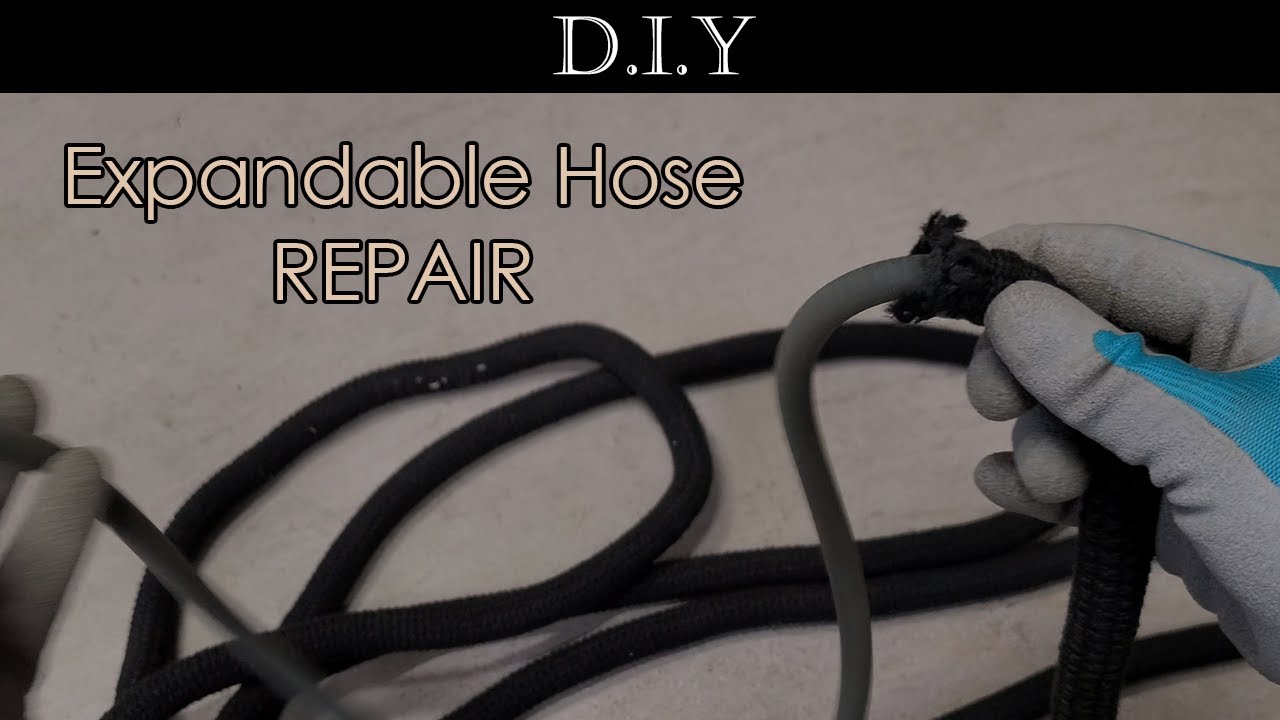To repair a flexible garden hose, start by locating the leak and marking its position. Then, cut the hose where the leak is, ensuring that the cut is clean and straight.

Credit: www.amazon.com
Next, attach a repair connector to each end of the cut hose and secure with hose clamps. Finally, tighten the clamps and check for any remaining leaks by turning on the water.
How to Repair a Flexible Garden Hose : Step by Step Guide
Assessing The Damage
Assessing the damage is the first step in repairing a flexible garden hose. Start by identifying the source of the leakage. Carefully examine the hose for any cracks, tears, or signs of wear. Look for areas where the water is escaping.
Thoroughly inspect the entire length of the hose, including the connectors and fittings. Check for any loose connections or damaged parts. If you notice any damages, mark the areas for repair. Once you have assessed the damage, you can proceed with the necessary repairs to ensure your garden hose functions properly.
Remember to follow the manufacturer’s instructions or consult a professional if needed. By taking the time to assess and identify the source of the leakage, you can effectively repair your garden hose and extend its lifespan.
Repairing Minor Leaks
Repairing a flexible garden hose with minor leaks is a straightforward process. Start by cleaning the damaged area to ensure proper adhesion of the repair solution. Apply the solution carefully, following the instructions on the hose repair kit. Make sure to evenly coat the damaged area.
After applying the solution, secure it in place with a clamp or tape. This will help the solution bond effectively and seal the leak. Pay attention to any additional instructions provided with the repair kit. By following these step-by-step guidelines, you can easily fix small leaks in your flexible garden hose, ensuring its functionality and preventing water wastage.
Fixing Major Damages
Repairing a flexible garden hose can be a simple task if you understand when to replace it. Identifying major damages is crucial. Observe sections that are irreparable, as they may need to be replaced. By replacing damaged portions, you can ensure the hose’s functionality.
Keep in mind that prevention is better than cure, so regularly inspecting your garden hose can help avoid major damages in the future. Remember, the goal is to fix and maintain your garden hose to extend its lifespan, providing you with a reliable watering tool.
With proper knowledge and care, you can easily repair and keep your flexible garden hose working efficiently for years to come.
Maintaining And Preventing Future Issues
Maintaining a flexible garden hose is crucial for its longevity. Regular inspection and maintenance are necessary to prevent future issues. To prolong the lifespan of the hose, follow these tips: 1. Ensure it is properly stored when not in use, protected from extreme weather conditions.
2. Avoid dragging the hose on rough surfaces to prevent abrasions. 3. Clean the hose after every use to remove dirt and debris that can cause blockages. 4. Use a hose reel or hanger to prevent kinks and tangles. 5.
Check for leaks or cracks periodically, repairing them promptly. 6. Use a nozzle with adjustable settings to control water pressure and reduce strain on the hose. By following these guidelines, you can keep your flexible garden hose in optimal condition and avoid unnecessary repairs or replacements.
Regular maintenance is key to ensuring its reliability whenever you need to water your garden or wash your car.
Frequently Asked Questions For How To Repair A Flexible Garden Hose
Are Expandable Hoses Repairable?
Expandable hoses are not repairable once they develop leaks or damage.
How Do You Fix A Rubber Garden Hose?
To fix a rubber garden hose, follow these steps: 1. Identify the location of the damage. 2. Cut away the damaged section using a utility knife. 3. Insert a hose mender or coupling into each cut end. 4. Secure the mender with hose clamps using a screwdriver.
How Do You Fix A Pinhole In A Rubber Garden Hose?
To fix a pinhole in a rubber garden hose, you can use a patch or apply some adhesive glue.
Why Do Flexible Garden Hoses Leak?
Flexible garden hoses may leak due to wear and tear, punctures, improper connections, or low-quality materials.
Conclusion
With these simple steps, you can easily repair a flexible garden hose and ensure its longevity. By first identifying the source of the leak and assessing the damage, you can determine which repair method is the most suitable. Whether it’s using a mender or replacing the damaged section altogether, it’s important to follow the manufacturer’s instructions and use the appropriate tools.
Regular maintenance, such as cleaning and storing the hose properly, will also extend its lifespan. Remember to check for leaks periodically and address them promptly to prevent further damage. Taking care of your garden hose will not only save you money but also make your gardening experience more enjoyable.
So, get ready to fix those leaks and enjoy a well-functioning garden hose for years to come.

